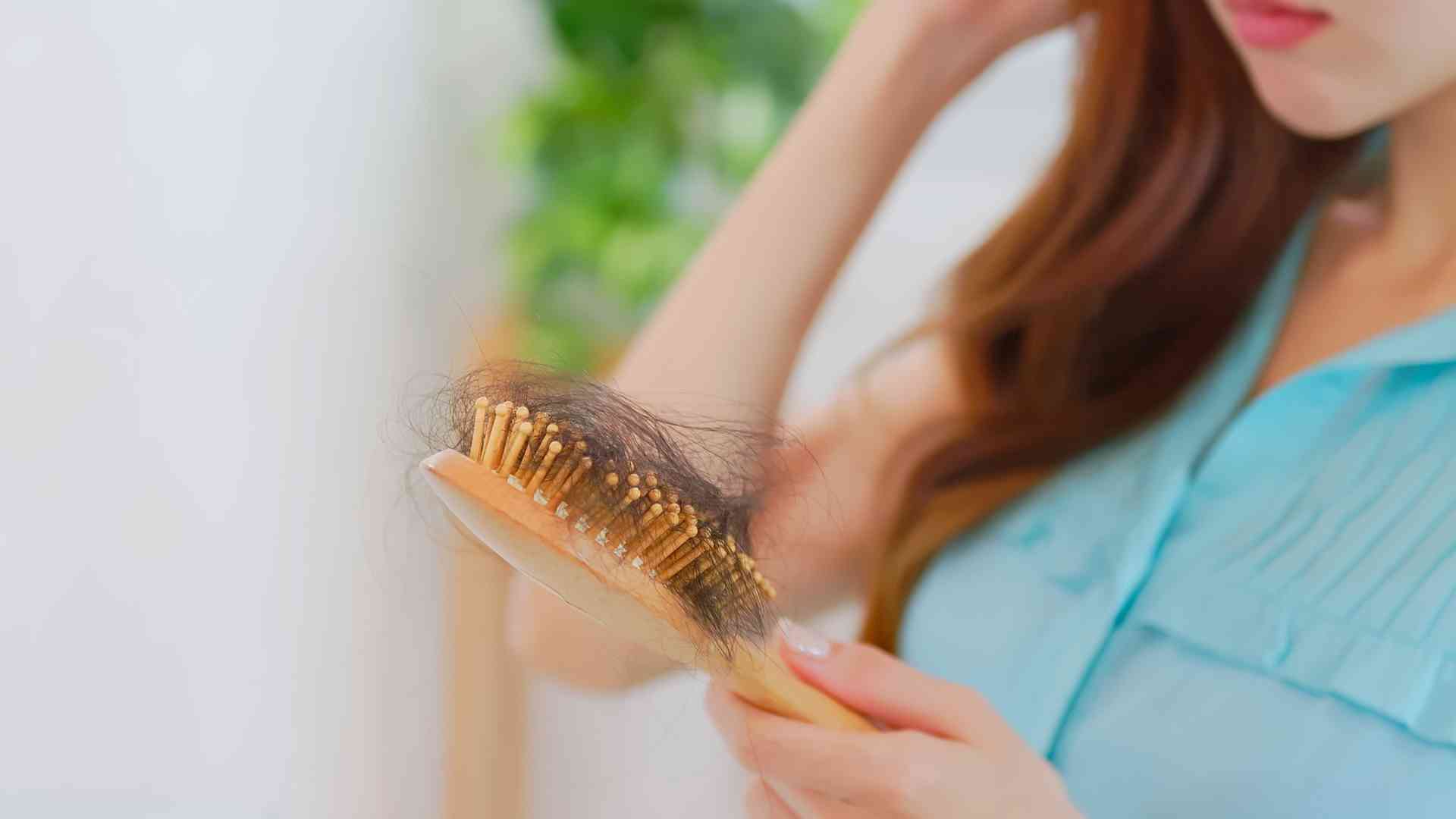Hair loss is a universal concern that transcends cultures and borders, affecting millions worldwide. Beyond its physiological implications, hair loss can deeply impact self-esteem, body image, and cultural perceptions of beauty. In a society where hair is often intertwined with identity and aesthetics, the emotional toll of hair loss is profound.
However, amidst the widely known medical treatments, there exists a rich tapestry of lesser-known, culturally rooted approaches to addressing this concern. This article delves into these hidden gems, exploring how different cultures around the world have harnessed their traditions, remedies, and rituals to manage and treat hair loss.
By shining a light on these often overlooked practices, we unveil a holistic perspective that embraces diverse solutions, empowering individuals to navigate their hair loss journey with a renewed sense of cultural pride and self-confidence.
1. Henna Therapy – India and the Middle East
In the vibrant tapestry of cultural practices, henna stands out as a revered remedy for hair loss in both India and the Middle East. Henna, derived from the Lawsonia inermis plant, has been utilized for centuries not only as an ornamental dye but also as a therapeutic agent to address hair concerns.
Natural Properties Stimulating Hair Growth:
Henna’s allure lies in its rich blend of natural compounds that are believed to nourish and fortify hair. Lawsone, its active component, has astringent properties that may help tighten the hair cuticles, promoting stronger, healthier strands. The cooling effect of henna on the scalp is thought to improve blood circulation, creating a conducive environment for hair follicle nourishment and growth.
Cultural Significance and Beyond:
Beyond its utilitarian benefits, henna holds immense cultural significance. In both India and the Middle East, henna is emblematic of celebrations, rituals, and auspicious occasions. Applied intricately to hands and feet during weddings and festivals, it symbolizes beauty, transformation, and positive energy. Incorporating henna into hair treatments not only promotes physical well-being but also fosters a deep connection to cultural heritage and traditions.
The practice of using henna for hair loss is a testament to the profound interplay between nature, tradition, and holistic well-being. As the ancient wisdom of henna traverses time and geography, it continues to remind us that the pursuit of healthy hair is not only a physical journey but a celebration of heritage and a connection to the roots that define us.
2. TCM (Traditional Chinese Medicine) – China
Traditional Chinese Medicine, a treasure trove of ancient wisdom, approaches health holistically, emphasizing the interconnectedness of the body, mind, and environment. TCM views the body as a dynamic system where balance and harmony foster well-being.
TCM Diagnosis and Hair Loss:
In TCM, hair loss is seen as an external manifestation of internal imbalances. TCM practitioners diagnose hair loss by analyzing the body’s energy flow, or Qi, along with other factors like blood circulation and the health of internal organs. Imbalances or blockages in these pathways are thought to contribute to hair loss.
Unconventional Treatments for Hair Growth:
TCM’s unconventional treatments for hair loss go beyond the ordinary. Acupuncture, for instance, involves inserting fine needles into specific points to stimulate Qi flow and promote blood circulation, thus nurturing hair follicles. Herbal concoctions tailored to individual imbalances are prescribed to address root causes of hair loss. Cupping, a therapy using suction cups, is believed to enhance blood flow to the scalp.
TCM’s approach to hair loss resonates with its philosophy of restoring harmony within the body. By embracing TCM’s intricate understanding of balance and energy flow, individuals engage in a journey that extends beyond hair growth – it’s an odyssey toward holistic well-being and equilibrium, in tune with the wisdom of generations past.
3. Scalp Massage and Oils – Africa

In the vibrant mosaic of African cultures, hair is a canvas of history, identity, and artistry. It’s more than just strands; it’s a tapestry that weaves stories of heritage, spirituality, and beauty. Hair’s importance in African culture transcends aesthetics, carrying profound symbolism and connecting generations.
The Practice of Scalp Massage with Natural Oils:
Embedded within this rich cultural tapestry is the practice of scalp massage, infused with the goodness of natural oils like argan and coconut. This age-old tradition is rooted in both practicality and reverence. Scalp massages using nourishing oils are believed to stimulate blood flow to the hair follicles, fostering growth, and enhancing hair health.
Beyond Physical Benefits: Relaxation and Emotional Well-Being:
These massages offer more than physical benefits. They also extend a soothing touch to the soul. The rhythmic movements and the therapeutic aroma of oils create a space of tranquility, promoting relaxation and emotional well-being. In a world bustling with noise, scalp massages become a cherished ritual, allowing individuals to pause, reconnect, and restore their inner balance.
Scalp massages with natural oils are a testament to the intimacy of heritage and well-being. In Africa, this practice is a profound reminder that nurturing hair is akin to nurturing a vital part of oneself – an acknowledgment of the past, a celebration of the present, and an investment in the future.
4. Ayurvedic Practices – South Asia
Originating in ancient South Asia, Ayurveda is a holistic system of healing that emphasizes the equilibrium of the body, mind, and spirit. Rooted in the belief that imbalances lead to ailments, Ayurveda seeks to restore harmony through personalized approaches.
Harnessing Nature for Hair Health:
Ayurvedic practices to combat hair loss encompass an intricate fusion of herbs, oils, and dietary adjustments. Herbal concoctions like Amla, Bhringraj, and Brahmi are believed to strengthen hair follicles and stimulate growth. Oils like coconut and sesame, infused with these herbs, nourish the scalp and hair. Dietary modifications align with Ayurvedic principles, promoting internal balance that reflects on external well-being.
Personalized Dosha-Based Treatments:
Central to Ayurveda is the concept of doshas – individual energies that govern one’s constitution. Vata, Pitta, and Kapha are the three doshas, and each person has a unique combination. Ayurvedic practitioners tailor treatments based on an individual’s dominant dosha, creating a bespoke plan that addresses not only hair loss but overall well-being.
Ayurveda’s legacy is a tapestry of wisdom, weaving connections between nature, body, and soul. Embracing its time-honored practices for hair care isn’t just about addressing hair loss; it’s about nurturing a profound alliance between self and universe, embracing the rhythms of existence, and honoring the harmony within.
5. Onion Juice Therapy – Mediterranean Region

In the sun-kissed embrace of the Mediterranean, a curious remedy for hair growth has stood the test of time: onion juice therapy. This unconventional practice involves applying freshly extracted onion juice to the scalp. Despite its pungent aroma, this remedy has garnered a dedicated following for its potential to enhance hair health.
Scientific Rationale of Onion’s Impact on Hair Follicles:
Behind the ancient allure of onion juice lies scientific intrigue. Onions are rich in sulfur, an element critical for the synthesis of keratin, a protein essential for hair growth. Sulfur may stimulate blood circulation to hair follicles, promoting the delivery of vital nutrients. Additionally, onion’s antioxidant properties could combat oxidative stress, a factor contributing to hair aging and loss.
Cultural Anecdotes and Historical Context:
Historically, Mediterranean cultures have celebrated onions for their culinary and medicinal qualities. From ancient Egypt to Greece and beyond, onions have been lauded for their healing attributes. Folk tales narrate how onion juice was revered for maintaining hair vitality in an era when chemical treatments were unheard of. The resonance of these cultural anecdotes mirrors the enduring faith in onion juice therapy.
Onion juice therapy echoes the symphony of nature’s bounty and human ingenuity. Amidst the whispers of history and the aromatic allure of onions, this practice intertwines tradition and science to offer a glimpse into the profound connection between nature and hair health.
6. Ginseng and Egg Yolk – East Asia
In the heart of East Asia’s cultural mosaic, the amalgamation of ginseng and egg yolk unveils a centuries-old remedy for hair loss. This unconventional blend merges the vitality of ginseng’s energy-boosting prowess with the nourishment of egg yolk’s rich nutrients, creating a potent elixir for hair health.
Harnessing Ginseng’s Energizing Essence:
Ginseng, revered in East Asian cultures for its holistic benefits, is believed to infuse hair follicles with revitalizing energy. Its bioactive compounds are thought to improve blood circulation, ensuring the efficient delivery of nutrients to hair roots. This boost of energy enhances the resilience and growth of hair.
Egg Yolk’s Nutrient-Rich Contribution:
Egg yolks, abundant in proteins, biotin, and essential vitamins, are celebrated for nurturing hair’s vitality. The nutrients they contain are considered building blocks for strong, lustrous hair. Egg yolk’s moisturizing properties may also promote a healthy scalp, fostering an environment conducive to hair growth.
Cultural Stories and Rituals:
Across East Asian cultures, ginseng and egg yolks hold esteemed positions in traditional rituals and folklore. In Korea, ginseng is considered a symbol of longevity and is woven into celebratory rituals. In China, the egg symbolizes rebirth and new beginnings. The infusion of these ingredients into hair care rituals echoes the reverence for nature’s bounty and the time-honored traditions that are deeply woven into the fabric of these cultures.
Ginseng and egg yolk, like an ancient dance between nutrients and tradition, remind us that caring for our hair is an act of nourishing not only the physical strands but also the cultural roots that define us. It’s a timeless symphony that celebrates the convergence of nature’s wisdom and human ingenuity.
7. Mesoamerican Herbal Remedies – Central and South America

In the fertile lands of Central and South America, Mesoamerican cultures have woven a rich tapestry of herbal remedies to combat hair loss. Embracing nature’s bounty, these remedies encompass a spectrum of botanical allies, each contributing its unique essence to hair health.
Aloe Vera, Nettle, and Horsetail for Hair Health:
Aloe vera, with its soothing gel, finds purpose beyond skincare – its enzymes and nutrients are thought to fortify hair strands. Nettle, abundant in vitamins and minerals, is believed to balance scalp oils and stimulate hair follicles. Horsetail, rich in silica, is heralded for its potential to enhance hair’s strength and sheen.
Cultural Significance and Historical Echoes:
These herbal practices hold deep cultural significance. Mesoamerican cultures revered plants not just for their medicinal attributes, but also for their spiritual and ritualistic roles. Aloe vera, known as the “Plant of Immortality,” was associated with rejuvenation. Nettle and horsetail were interwoven into traditional practices, aligning with the reverence for nature’s wisdom that defined these civilizations.
The Mesoamerican legacy of herbal remedies for hair care reflects a profound understanding of nature’s interplay with human well-being. It’s a reminder that nurturing hair is a journey that honors the earth’s offerings, cultural heritage, and the enduring connection between past and present.
Watch Scientists find potential cure for baldness | Video
Top 5 FAQs and answers related to 7 Cultural Approaches to Hair Loss Treatment Worldwide
What are some unusual cultural approaches to hair loss treatment?
Cultures around the world have embraced diverse remedies. For instance, in the Mediterranean, applying onion juice is believed to stimulate hair growth due to its sulfur content. In East Asia, a blend of ginseng and egg yolk is utilized for its revitalizing properties. Mesoamerican cultures use herbs like aloe vera and nettle to address hair loss.
Are these cultural treatments scientifically effective?
Many of these remedies have elements that align with scientific principles. For example, onion juice contains sulfur, essential for hair health. Ginseng’s potential to improve blood circulation and egg yolk’s nutrients contribute to their efficacy. While these practices may not have extensive clinical evidence, they often offer a holistic approach that connects tradition, nature, and well-being.
How do cultural beliefs play a role in these treatments?
Cultural beliefs infuse these treatments with significance. Hair often holds deep cultural and symbolic meaning, making its loss emotionally charged. Remedies like henna in the Middle East or ginseng in East Asia extend beyond the physical; they honor heritage, tradition, and the connection between nature and self.
Should I try these remedies alongside conventional treatments?
It’s essential to consult healthcare professionals before incorporating any treatment, conventional or cultural. Combining traditional practices with medical guidance can provide a holistic approach. Keep in mind that while cultural treatments have historical roots, individual results may vary, and they might not replace clinically proven methods.
What can we learn from these cultural practices?
These practices offer a window into the intricate relationships between nature, culture, and well-being. They remind us of the profound connection between tradition and health. While not a substitute for medical advice, they encourage us to consider a holistic approach that embraces diverse wisdom from around the world.
Conclusion

As we journeyed through cultures and continents, we unveiled a mosaic of unconventional approaches to hair loss treatment. From henna therapy in the Middle East to Ayurvedic practices in South Asia, ginseng and egg yolk in East Asia, Mesoamerican herbal remedies in Central and South America, and even onion juice therapy in the Mediterranean region, we discovered a world rich in wisdom and tradition.
The significance of these practices extends beyond their potential efficacy. They embody cultural beliefs, weaving heritage and nature into a holistic approach to well-being. The impact of hair loss transcends the physical; it touches our identity, emotions, and sense of self.
As we navigate the realm of unconventional treatments, let’s approach them with open minds and respect for the diversity of human experiences. While not substitutes for medical advice, these practices offer us a unique lens through which to explore the intricate connections between tradition, nature, and health.
In a world where individuality is celebrated, recognizing the value of cultural practices nurtures our shared humanity. Let’s honor the wisdom passed down through generations, weaving our stories into the tapestry of cultural heritage while embracing the beauty of diversity in our pursuit of holistic well-being.
Please share this 7 Cultural Approaches to Hair Loss Treatment Worldwide with your friends and do a comment below about your feedback.
We will meet you on next article.
Until you can read, 6 Lesser-Known Herbal Remedies and Oils for Hair Growth